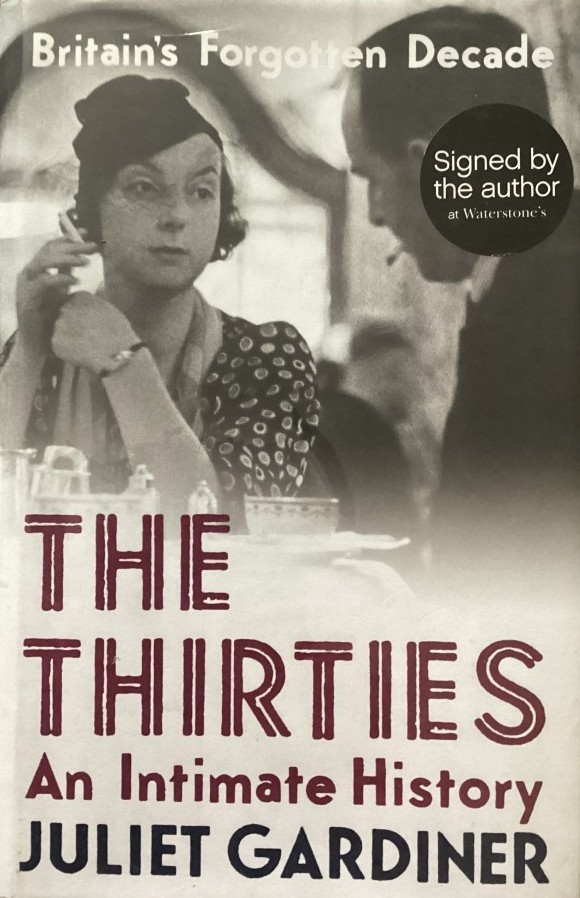Inspiring Older Readers
 posted on 24 Mar 2024
posted on 24 Mar 2024
The Thirties: An intimate history by Juliet Gardiner
I have to admit that reading Juliet Gardiner’s The Thirties: An intimate history was something of a long-running project. The word ‘intimate’ might suggest that the book focuses on a discreet aspect of that decade but if that’s where your instinct takes you then I have to report that you couldn’t be more wrong. This is an enormous brick of a book – some 750 pages but 850 if you include notes and references – that is practically impossible to curl up with but which rewards your rectitude if you stick with it by taking you into just about every dusty corner of British life.
The banner headline on the dust jacket of the first edition declares that this is ‘Britain’s Forgotten Decade’ which might be good marketing hype but which is, I think, untrue. I’m assuming that whoever wrote that must be assuming that the trauma of the Second World War which comes along at the end of the decade rather overshadows what went before it – but, of course, they would be wrong. This is the decade of mass unemployment, slum poverty, Governmental turmoil, the emergence of Fascism, the Spanish Civil War, Modernism in literature, new visions for the role of culture: I’m not sure how this agenda qualifies in any sense as ‘forgotten’?
Gardiner’s attempt to navigate her way, heroically, through all of this and more is ‘intimate’ however in the way she tries all the time to bring history alive through the individual personal stories of those enduring hardship, seeking security, finding ways to entertain themselves and, always, being creative. It’s the sheer size of the book that allows Gardiner to burrow into small details that when taken collectively amount to a more three-dimensional picture of the age.
Attempting to throw your arms around the whole decade inevitably comes with some downsides too. The focus on what was happening at street level or in living rooms means that there is, for my taste at least, too little time to look at the nature of the policy debates that surrounded the way unemployment, poverty relief and the like were conducted. I was especially struck at the absence of any real analysis of Britain’s stance – at a political level – on the issue of the Spanish Civil War. Equally, there is no real critical analysis of the behaviour of the royal family during this period – the abdication and the cosying-up to Fascists is passed over too lightly in my view.
The other aspect of the book that came to slightly niggle me was the sheer scope of what it tried to cover. There were times when I felt that I was being galloped through event after event as if they were being checked off a tick-list. It became hard to see whether the author felt one landmark event was more or less important than another.
In the end I was left feeling that this was an often enjoyable and important slab of social history but one which ultimately didn’t give me a sense of the author’s own assessment of what constituted the spirit of the age, the zeitgeist of the times. This was undoubtedly a troubled decade and, for many, times were hard and the looming spectre of another war must have sapped the spirits of many. But it wasn’t a time of unremitting gloom – exciting things were happening culturally and change was afoot in our relationships with the rest of the world. But Gardiner leaves us to make our own assessments of these things – and I’d have liked her to come upfront more and not to rely so much on implicit value judgements but to give us her interpretation more directly.
Luckily for you, there is a paperback version of the book available – although I’m still not sure it’s lightweight enough to take as bedtime reading.
Terry Potter
March 2024